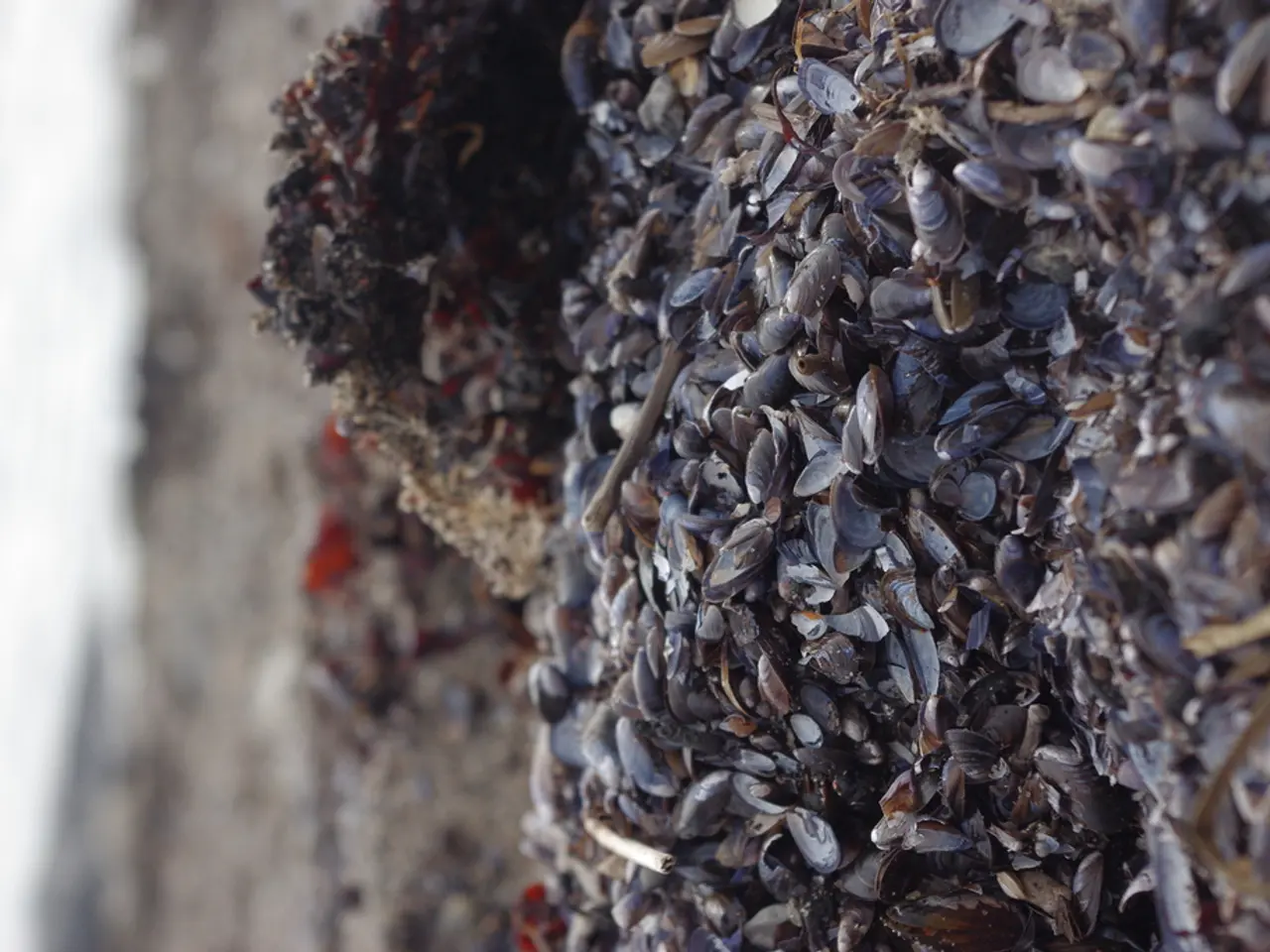Oysters: Their nutritional profile, advantages, and potential hazards.
Oysters, a popular seafood choice, offer a wealth of nutritional benefits while also posing certain health risks. These bivalve mollusks, belonging to the family of Pacific and Eastern oysters, are a rich source of protein, vitamins, and minerals that support heart and brain health, boost immunity, enhance muscle and bone strength, and improve skin health [1][4].
One of the key nutrients found in oysters is protein. A higher-protein diet, including oysters, can help reduce obesity [2]. Oysters are also a great source of vitamin B12, omega-3 fatty acids, zinc, and iron. The omega-3s and vitamin B12, in particular, contribute to better cognitive function and may help reduce risks of memory loss and age-related cognitive decline [1].
Zinc in oysters supports immunity, wound healing, growth, and development, and plays a role in sexual function. Selenium, another essential mineral found in oysters, plays a role in thyroid function, metabolism, and has antioxidant properties, potentially helping protect against cancer, heart disease, and cognitive decline [3].
However, there are health risks associated with consuming oysters, primarily related to bacterial contamination such as Vibrio species, which can cause serious illness, especially if oysters are eaten raw or undercooked [1][3][5]. People with shellfish allergies, weakened immune systems, or those undergoing treatments like chemotherapy should avoid raw or undercooked oysters [1][2]. Overconsumption can also result in zinc overdose, potentially upsetting the stomach or disrupting copper balance [1].
To ensure safe consumption, oysters should be thoroughly cooked to kill harmful bacteria. Recommended preparations include grilling, steaming, boiling, or baking until the oysters reach an internal temperature of at least 145°F (63°C). Avoid eating raw oysters unless you are certain they come from reputable sources and are freshly handled [1][3][5]. It's important to buy oysters from trusted suppliers, ensure freshness, prevent cross-contamination, and store them properly in refrigeration until cooking [1][3][5].
Oysters can be included in the diet in various ways, such as leek, celeriac, and oyster broth, oysters Rockefeller, oysters with pancetta, oysters poached in red wine sauce, grilled oysters with parmesan cheese, oyster risotto, oysters in beer batter, champagne gratin of oysters, oysters with spinach, chili-coated oysters with red onion salsa, and more [2]. For shucked oysters, frying at 375°F (190.5°C) for at least 3 minutes, broiling 3 inches from heat for 3 minutes, baking at 450°F (232.2°C) for 10 minutes, or cooking in a hot steamer for about 9 minutes are also acceptable cooking methods [3].
The Centers for Disease Control and Prevention (CDC) recommend boiling oysters until their shells open, then boiling for another 3-5 minutes or steaming for 4-9 minutes [3]. Oysters that do not open during cooking should be discarded.
In conclusion, consuming cooked oysters offers several health benefits, but it's essential to be aware of the potential risks and take necessary precautions. By ensuring oysters are fully cooked, buying from trusted sources, and consuming in moderation, you can maximize the nutritional benefits of oysters while minimizing potential health hazards.
References:
[1] Harvard T.H. Chan School of Public Health. (n.d.). Oysters, raw. Retrieved from https://www.hsph.harvard.edu/nutritionsource/food-features/oysters-raw/
[2] Mayo Clinic. (2021, March 30). Oysters: Nutrition, benefits, risks, and preparation. Retrieved from https://www.mayoclinic.org/foods/oysters/nutrition-charts/oysters
[3] Food Safety and Inspection Service. (n.d.). Safe Handling and Cooking of Shellfish. Retrieved from https://www.fsis.usda.gov/wps/portal/fsis/topics/food-safety-education/get-answers/food-safety-fact-sheets/safe-food-handle/safe-handling-and-cooking-of-shellfish/ct_index
[4] Nutrition and You. (n.d.). Oysters Nutrition Facts & Calories. Retrieved from https://nutritionandyou.com/oysters-nutrition-facts-and-calories/
[5] Centers for Disease Control and Prevention. (2020, December 14). Vibrio and Shellfish. Retrieved from https://www.cdc.gov/parasites/vibrio/food/shellfish.html
- Oysters, rich in protein, offer nutritional benefits such as supporting heart and brain health, boosting immunity, enhancing muscle and bone strength, and improving skin health.
- A higher-protein diet, including oysters, can help reduce obesity and may contribute to better cognitive function, potentially reducing risks of memory loss and age-related cognitive decline.
- Zinc and selenium, found in oysters, play crucial roles in health, with zinc supporting immunity and selenium having antioxidant properties and potentially helping protect against certain diseases.
- To ensure safe consumption, it's essential to thoroughly cook oysters, buy from trusted suppliers, ensure freshness, prevent cross-contamination, and store them properly in refrigeration until cooking. Avoid eating raw oysters unless they come from reputable sources and are freshly handled.




